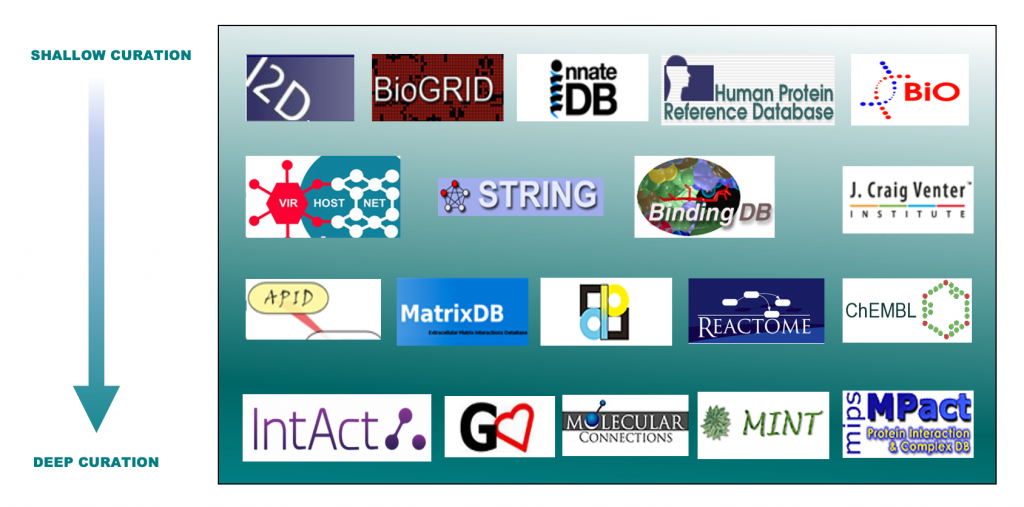Curation levels
As explained before, different databases use varying levels of annotation or curation. Figure 8 organises some molecular interactions and pathways databases, including members of the IMEx consortium, according to the different levels of detail in their curation procedures, ranging from light curation to the very detailed level of description that the IMEx guidelines require.

Light curation is used where the main goal is to re-publish maximum content with minimum effort – sufficient to give identifiers to the interacting partners and state the interaction detection method used. The MIMIx (Minimum Information required for reporting a Molecular Interaction eXperiment) standard goes one step beyond this, providing a lightweight version of the IMEx guidelines.19,20
Deep curation requires a detailed description of all the features involved in the interaction and interacting partners, and complies with the full version of the IMEx guidelines; this requires more time and resources. IMEx members including IntAct, MINT, DIP and MatrixDB are required to register their data complying with these guidelines. You can see a full list of IMEx-compliant databases on the IMEx Consortium website.
Now, let’s have a look at the molecular interactions database hosted in EMBL-EBI.